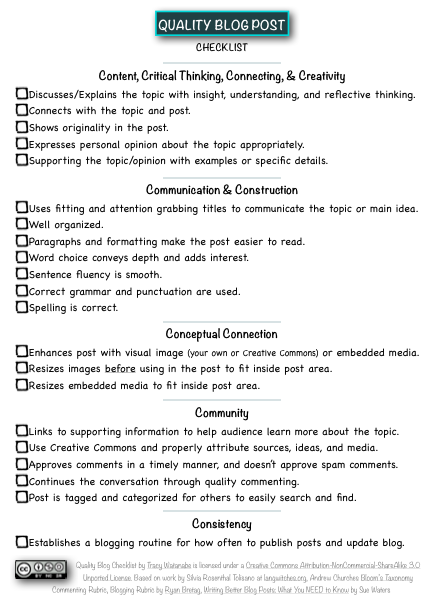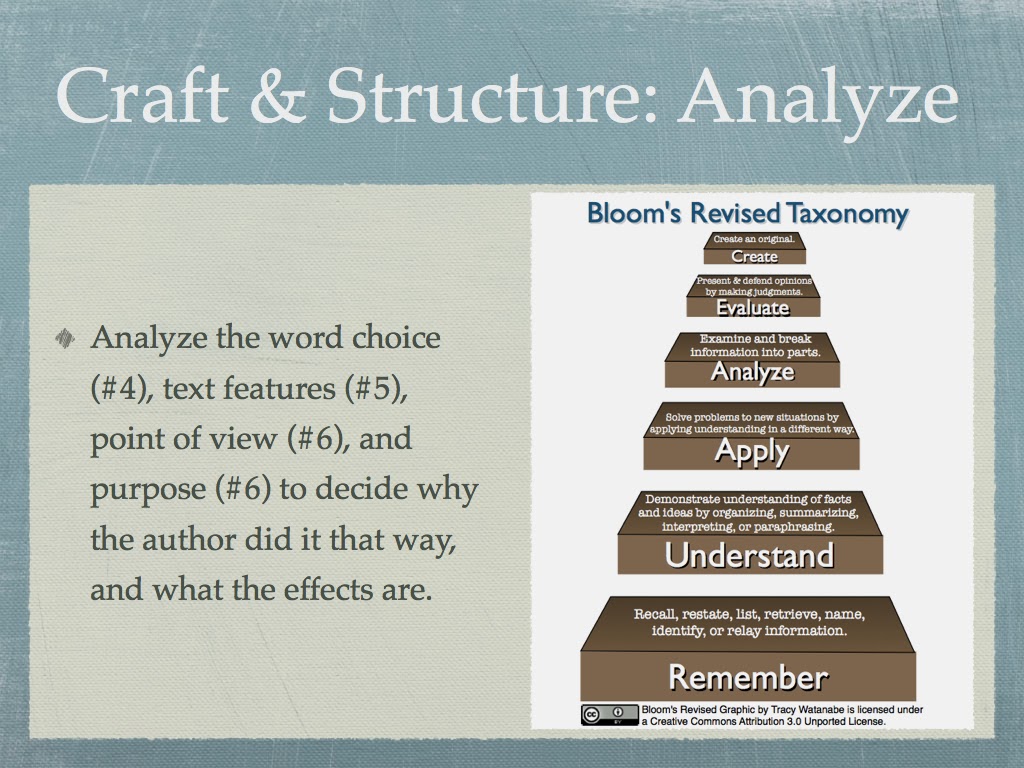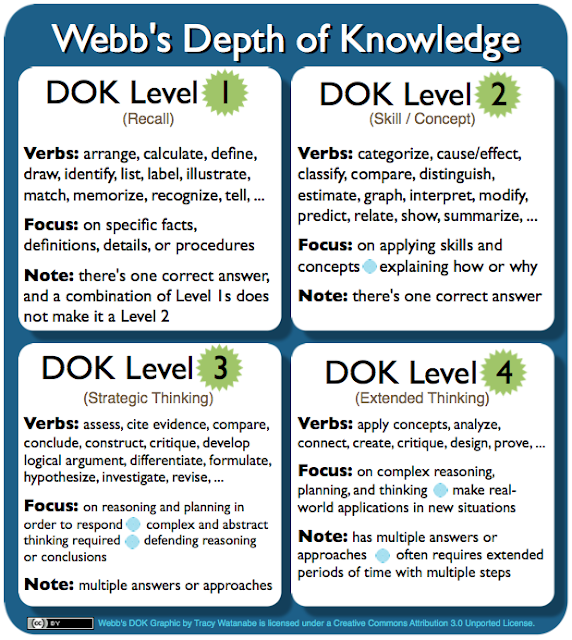One-to-One Key Ideas: Focus on Learning
One-to-One is a learning initiative, not a technology program. It's not about shiny objects; it's about how the technology is used, and giving all students ubiquitous access to use it.
Task predicts performance

Students can use the same cool tool for lower-level thinking and higher-level thinking. Externally, the product may look the same (such as a presentation made with Prezi), but the learning outcomes would be quite different when they use it for higher-level thinking.
If the student task predicts their learning outcomes and academic performance, then creating a learning task at Webb's Depth of Knowledge Levels 3 or 4 is the goal.
How do you want students to use technology in the classroom?
9 Wrong And 8 Right Ways Students Should Use Technology on Edudemic focuses on technology, a tool, being used for learning outcomes.
Strong ways for students to use technology are:
Being deliberate with technology to enhance learning
The bottom line is we need to be deliberate with the technology use so that it increases learning, thereby increases student achievement, and transforms the learning.
Another way to think of it is by asking, can the task be done without the technology? If so, is that the only way it's used? When is it used in ways to benefit learners that wouldn't be possible without the technology?
Resources
Here are a few lessons, units, and collaborative opportunities that include worthwhile tasks and technology that transforms learning:
Final thoughts
It takes time for teachers to transition from being the content experts and the only means for students to learn, to using their expertise and being facilitators, allowing students opportunities to learn from one another and others around the globe, engaging learners in deep and meaningful tasks. Teachers need to focus on more than the content knowledge students learn--they need to focus on the skills required in the 21st century.
Common Core demands students to do their own thinking and support their claims and opinions with evidence. Therefore, the skills they need are different than skills required in the 20th century, and technology is part of that when used to transform learning.
Task predicts performance

Students can use the same cool tool for lower-level thinking and higher-level thinking. Externally, the product may look the same (such as a presentation made with Prezi), but the learning outcomes would be quite different when they use it for higher-level thinking.
If the student task predicts their learning outcomes and academic performance, then creating a learning task at Webb's Depth of Knowledge Levels 3 or 4 is the goal.
How do you want students to use technology in the classroom?
9 Wrong And 8 Right Ways Students Should Use Technology on Edudemic focuses on technology, a tool, being used for learning outcomes.
 |
Strong ways for students to use technology are:
- to create (some examples include an original infographic making sense of data or a message; or putting together thoughts from various sources and comparing themes in a presentation or blog post)
- to communicate with remote groups that could not typically happen due to time or space barriers (for example, students conversing with an expert across the country/globe)
- to collaborate with others (such as students in Australia sharing thoughts/feedback with students in the USA)
- to discover and inquire
- to critically and creatively think
- to problem solve
- to contribute healthily to the globe (creating positive digital footprints and sharing something valuable to others around the globe)
- to reflect and share their reflections (via Skype, a blog post, a digital story, etc.)
Being deliberate with technology to enhance learning
The bottom line is we need to be deliberate with the technology use so that it increases learning, thereby increases student achievement, and transforms the learning.
Another way to think of it is by asking, can the task be done without the technology? If so, is that the only way it's used? When is it used in ways to benefit learners that wouldn't be possible without the technology?
Resources
Here are a few lessons, units, and collaborative opportunities that include worthwhile tasks and technology that transforms learning:
- The Center for Innovation in Engineering and Science Education
- Journey North: A Global Study of Wildlife Migration and Seasonal Change
- Student Blogging Challenge
- Flat Classroom Projects
- Projects By Jen (primary/elementary geared)
- Thinkfinity Resources
Final thoughts
It takes time for teachers to transition from being the content experts and the only means for students to learn, to using their expertise and being facilitators, allowing students opportunities to learn from one another and others around the globe, engaging learners in deep and meaningful tasks. Teachers need to focus on more than the content knowledge students learn--they need to focus on the skills required in the 21st century.
Common Core demands students to do their own thinking and support their claims and opinions with evidence. Therefore, the skills they need are different than skills required in the 20th century, and technology is part of that when used to transform learning.
- How do you use technology to transform learning?
- What resources would you add to the list above for worthwhile tasks?
- How does one-to-one benefit learners?
- How else does this post connect with you?



Comments
Post a Comment
Directions for posting:
1) Choose "Comment As" first. If you don't have a Google/Blogger account, you can choose Name/URL and type in your name, then place the web site that best describes you in the URL (i.e. www.ajusd.org). Or, you can choose "Anonymous".
2) You may need to press "Post Comment" more than one time.
It is always wise to copy your comment before pressing "Post Comment" just in case something happens.
3) Type in the word verification.
4) If you did everything correctly, it will state, "Your comment has been saved and will be visible after blog owner approval." If you do not get that message, please try again.
Click here for a tutorial on how to comment.
Thank you!